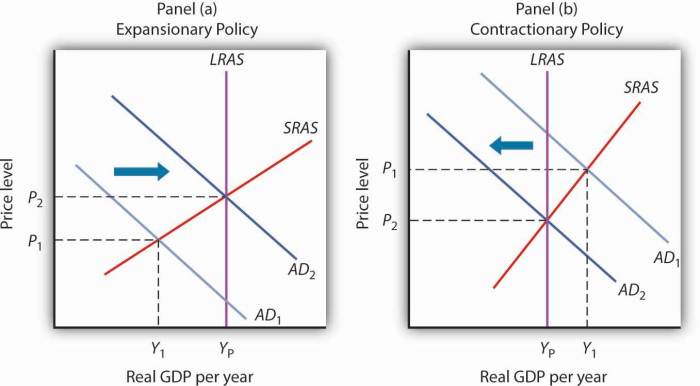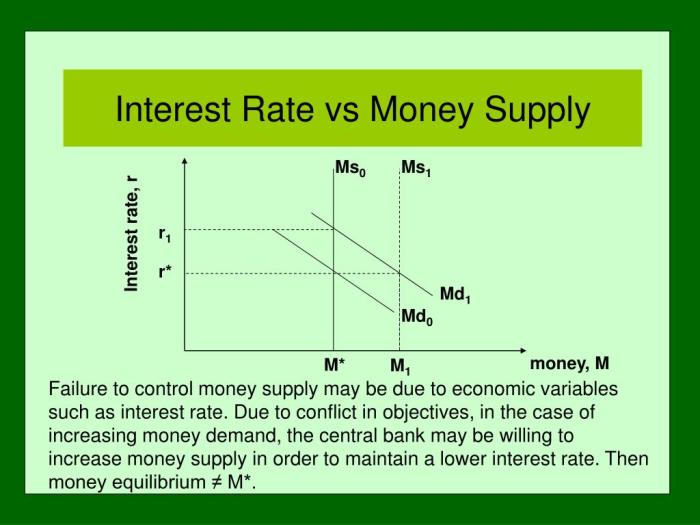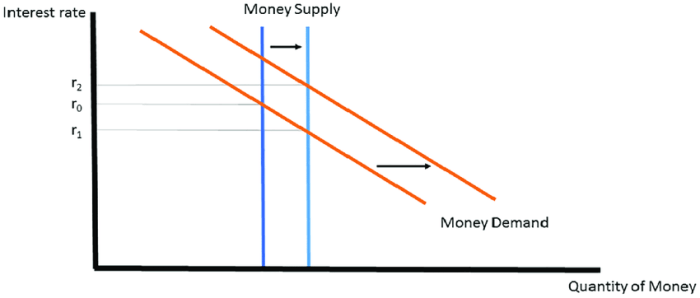Classify each action as expansionary or contractionary monetary policy. – Classify each action as expansionary or contractionary monetary policy, delving into the strategies employed by central banks to influence economic growth and stability. This comprehensive analysis unravels the tools, goals, and implications of these monetary policies, empowering readers with a profound understanding of their impact on the economy.
Monetary policy, a crucial aspect of macroeconomic management, encompasses a range of actions implemented by central banks to regulate the money supply and interest rates, thereby influencing economic activity. Expansionary monetary policy, aimed at stimulating economic growth, contrasts with contractionary monetary policy, which seeks to curb inflation and stabilize the economy.
Monetary Policy Definition

Monetary policy refers to the set of actions taken by a central bank to influence the money supply and credit availability in an economy. The primary tools used in monetary policy include:
- Open market operations
- Reserve requirements
- Discount rate
Expansionary Monetary Policy: Classify Each Action As Expansionary Or Contractionary Monetary Policy.

Definition
Expansionary monetary policy is a set of actions taken by a central bank to increase the money supply and stimulate economic growth. The goal of expansionary monetary policy is to lower interest rates and make it easier for businesses and consumers to borrow money.
Tools, Classify each action as expansionary or contractionary monetary policy.
The following tools are commonly used to implement expansionary monetary policy:
- Open market operations (buying government bonds)
- Lowering reserve requirements
- Lowering the discount rate
Contractionary Monetary Policy

Definition
Contractionary monetary policy is a set of actions taken by a central bank to reduce the money supply and slow economic growth. The goal of contractionary monetary policy is to raise interest rates and make it more expensive for businesses and consumers to borrow money.
Tools, Classify each action as expansionary or contractionary monetary policy.
The following tools are commonly used to implement contractionary monetary policy:
- Open market operations (selling government bonds)
- Raising reserve requirements
- Raising the discount rate
Examples of Expansionary and Contractionary Monetary Policy
Expansionary Monetary Policy
- In 2008, the Federal Reserve implemented an expansionary monetary policy to stimulate the economy during the financial crisis.
- In 2020, the European Central Bank implemented an expansionary monetary policy to combat the economic effects of the COVID-19 pandemic.
Contractionary Monetary Policy
- In 1981, the Federal Reserve implemented a contractionary monetary policy to combat high inflation.
- In 2018, the Bank of England implemented a contractionary monetary policy to slow economic growth and prevent inflation.
Effects of Expansionary and Contractionary Monetary Policy

Expansionary Monetary Policy
Expansionary monetary policy can have the following effects:
- Lower interest rates
- Increase inflation
- Stimulate economic growth
Contractionary Monetary Policy
Contractionary monetary policy can have the following effects:
- Raise interest rates
- Reduce inflation
- Slow economic growth
Transmission Mechanism of Monetary Policy
Monetary policy affects the economy through a variety of channels, including:
- Interest rate channel
- Credit channel
- Expectations channel
Answers to Common Questions
What is the primary objective of expansionary monetary policy?
Expansionary monetary policy aims to stimulate economic growth by increasing the money supply and lowering interest rates, thereby encouraging borrowing and investment.
How does contractionary monetary policy combat inflation?
Contractionary monetary policy reduces the money supply and raises interest rates, making borrowing more expensive and slowing economic growth, which helps to curb inflation.